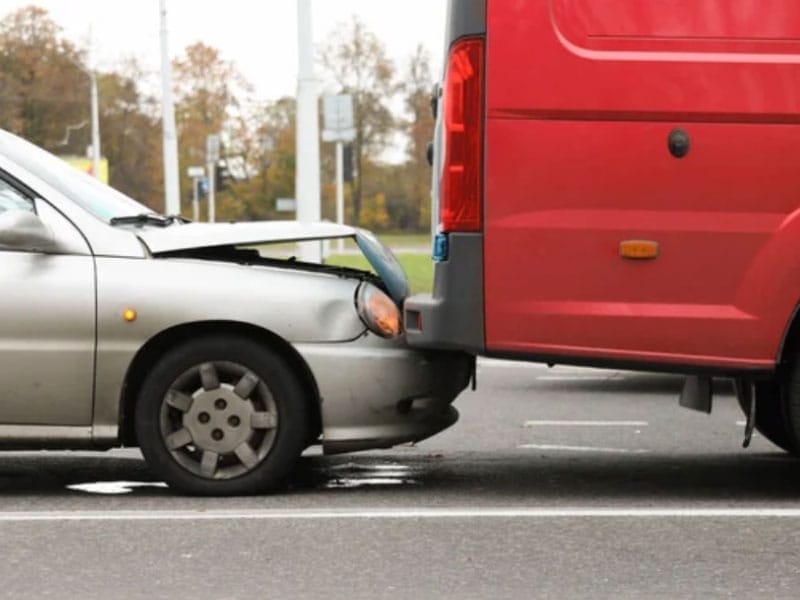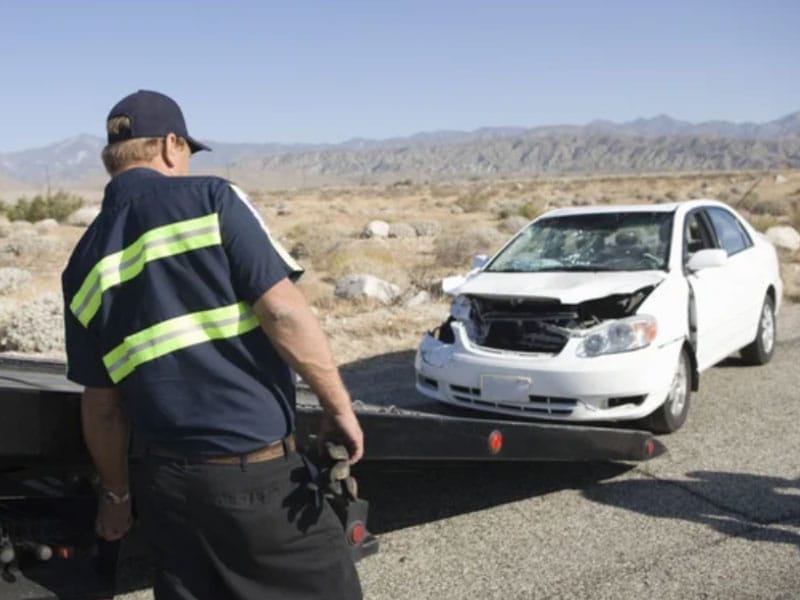Safe Driving Tips To Prevent Common Injuries
When we hit the road, safety is not just a word—it’s a lifeline.
For many of us, driving is part of daily life, but it carries risks that can lead to injuries or worse.
Car accidents happen every day, and they’re often due to simple mistakes that could have been avoided.
Whether you’re commuting to work, dropping off your kids at school, or embarking on a road trip adventure, understanding how to drive safely matters—a lot.
Did you know that according to the National Highway Traffic Safety Administration (NHTSA), wearing seat belts saved nearly 15,000 lives in one year alone.
This fact highlights that smart decisions behind the wheel make all the difference.
This article offers some easy-to-follow tips designed to keep you and your loved ones safe on any journey.
We’ll cover everything from buckling up properly to handling tough driving conditions like rain or snow.
This lifesaving advice is tailored for drivers of all ages and experience levels—because staying safe should never be complicated.
Key Takeaways
- Buckle up every time: Wearing a seat belt is the simplest and most effective way to protect yourself in a crash. Make it an automatic habit as soon as you get into any vehicle.
- Avoid distractions: Keep your full attention on driving. Do not text, eat, or engage in other activities that take your focus off the road.
- Follow traffic rules: Obey speed limits and use turn signals when changing lanes or turning to communicate your intentions to others clearly.
- Maintain your vehicle: Regular checks and maintenance of your car can prevent breakdowns and contribute to safer driving conditions.
- Drive according to conditions: Adjust speed and following distance for weather-related road conditions such as rain, snow, or ice to prevent accidents.
Understanding the Importance of Safe Driving
Jumping into the driver’s seat comes with significant responsibility.
Safe driving directly influences your well-being and that of others on the road.
Every time you follow traffic laws, resist texting while driving, or decide not to drive under the influence, you’re making choices that can prevent motor vehicle crashes and save lives.
It’s not just about avoiding speeding tickets or fender-benders; it’s about keeping our roads a safer place for everyone.
Acknowledging safe driving practices is crucial for protecting yourself against unforeseen incidents too.
Proper use of safety belts, air bags, and head restraints can drastically reduce injuries during accidents.
Plus, consistent vehicle maintenance ensures your car functions properly to respond to weather conditions and other drivers’ actions efficiently.
Developing these habits early sets a foundation for a lifetime of conscientious driving—a commitment to personal safety and shared responsibility on our highways.

Essential Safe Driving Practices
Always wear your seat belt, adjust your seat and mirrors before driving, avoid distractions such as texting or eating while behind the wheel, follow speed limits, maintain a safe following distance from other vehicles, use turn signals when changing lanes or making turns, stay alert and be mindful of blind spots.
Remember to use child safety seats correctly for young passengers and practice defensive driving techniques to minimize the risk of accidents.
Consistent Use of Seat belts
Wearing a seat belt every time you drive or ride in a car is not just a smart choice—it’s a life-saving habit.
Seat belts are your first line of defense in the event of an accident, designed to protect you from hitting the dashboard or being ejected from the vehicle during collisions.
Statistics show that drivers and passengers who buckle up increase their chances of surviving serious crashes significantly.
Make it second nature to strap on your seat belt as soon as you get into any car, whether you’re riding as a passenger or taking the wheel.
Remember to secure both the shoulder belt and lap belt for maximum protection.
This simple step drastically reduces injuries in rollovers and high-speed impacts by keeping occupants within the safety zone created by airbags and crumple zones.
Encourage everyone in your vehicle to do likewise, setting an example for safety whenever you’re on the road.
Adjust Your Seat and Mirrors
Properly adjusting your seat ensures you have complete control over the vehicle and helps you avoid unnecessary strain or injury.
Make sure you can easily reach the pedals without stretching your legs fully, allowing a slight bend in your knees.
Your seat should support your spine comfortably, and the headrest must align with the top of your head to protect against whiplash in case of a car crash.
Setting up your mirrors is crucial for road safety as it minimizes blind spots and aids in making informed decisions while driving.
Adjust side mirrors so just a fraction of your car’s sides are visible; this gives you a wider view of the lanes next to you.
The rear-view mirror needs to provide a clear scene straight out to the back window without having to shift around in your seat.
These adjustments boost reaction time by giving drivers better awareness of their surroundings, helping prevent traffic accidents and fender benders.
Avoiding Distracted Driving
Avoid using your cell phone while driving to avoid distracted driving.
Turn off or silence your phone and keep it out of reach to minimize temptation.
Additionally, encourage passengers to help with navigation or handle any necessary calls or texts.
Follow Speed Limits
To ensure safe and responsible driving, it’s crucial to follow speed limits diligently.
Speed limits are set based on various factors including road conditions, visibility, and pedestrian traffic.
Adhering to these limits not only reduces the risk of accidents but also contributes to overall highway safety.
Exceeding speed limits significantly increases the likelihood of severe crashes and injuries.
By obeying speed restrictions, motorists contribute to creating a safer environment for all road users while minimizing potential hazards associated with excessive speeds.
Keep a Safe Following Distance

Maintain a safe following distance to allow for ample reaction time in case the vehicle in front slows down or stops suddenly.
This helps prevent rear-end collisions, which are one of the most common types of car accidents.
By keeping a safe distance, you can also avoid tailgating and reduce the risk of being involved in a chain reaction if an accident occurs ahead.
Adopting this simple practice can significantly contribute to overall road safety and minimize the likelihood of injuries caused by abrupt stops or collisions.
Remember, maintaining a safe following distance is essential for protecting yourself and others on the road.
Use Turn Signals
Always use your turn signals when changing lanes, merging, or turning.
This simple yet vital habit helps other drivers anticipate your next move and reduces the risk of accidents.
Neglecting to signal can lead to confusion and potential collisions with nearby vehicles or pedestrians.
Remember that using turn signals is a small action that has a big impact on road safety.
By signaling your intentions clearly and consistently, you contribute to a safer driving environment for everyone around you.
Always make it a priority to use turn signals whenever necessary, providing clear communication to those sharing the road with you.
Stay Alert
Maintaining alertness while driving is crucial for preventing accidents.
Pay attention to your surroundings, including other vehicles, pedestrians, and road conditions.
Minimize distractions by refraining from using electronic devices or engaging in activities that divert your focus away from the road.
Remaining vigilant allows you to anticipate potential hazards and react promptly, promoting a safer driving experience for yourself and others on the road.
Additionally, recognizing signs of fatigue or drowsiness is essential for staying alert while behind the wheel.
Take necessary breaks to rest and rejuvenate during long drives, ensuring that you are in an optimal state to drive responsibly.
Be Mindful of Blind Spots
Stay alert and be mindful of blind spots while driving.
Check your mirrors regularly and use them to gauge the presence of vehicles in adjacent lanes.
Utilize your turn signals when changing lanes, but remember that they don’t give you the right-of-way; always visually check for other vehicles before making a move.
Adjust your position within your lane to maximize visibility and minimize blind spots.
Additionally, avoid lingering in another driver’s blind spot, as this can lead to dangerous situations on the road.
Keep in mind that large trucks have significantly larger blind spots compared to smaller vehicles.
When passing a truck, try to do so quickly and decisively while maintaining a consistent speed.
Use Child Safety Seats Correctly
When installing a child safety seat, carefully follow the manufacturer’s instructions to ensure proper installation.
Make sure to secure the seat tightly using either the vehicle’s seat belt or LATCH system.
Ensure that the harness straps are snug and positioned at or below your child’s shoulders for maximum safety.
Regularly check for any looseness in the seat and adjust as necessary to maintain a secure fit.
Properly position the chest clip at armpit level and remove any bulky clothing before buckling your child into the safety seat.
When transitioning from rear-facing to forward-facing seats, always follow age and size guidelines provided by car seat manufacturers to ensure optimal protection for your growing child.
Driving Defensively
When it comes to staying safe on the road, driving defensively is crucial.
This means being aware of your surroundings at all times and anticipating potential hazards before they occur.
Defensive driving involves scanning for potential dangers, maintaining a safe distance from other vehicles, and being prepared to react quickly if necessary.
By staying vigilant and proactive behind the wheel, drivers can significantly reduce the risk of accidents and ensure a safer experience for themselves and others on the road.
Embracing defensive driving practices also includes adapting to changing road conditions, adjusting speed accordingly, signaling intentions clearly, and always being courteous towards other drivers.
Avoid Aggressive Driving

Driving defensively is crucial for road safety, but equally important is avoiding aggressive driving behaviors.
Aggressive driving, such as tailgating, excessive speeding, and weaving in and out of traffic lanes, significantly increases the risk of accidents and endangers everyone on the road.
Remaining calm behind the wheel, refraining from confrontations with other drivers, and keeping emotions in check can help maintain a safe environment for all road users.
By exercising patience and understanding that reaching the destination safely is more important than arriving quickly, drivers can contribute to a safer and more harmonious driving experience for everyone.
By recognizing potential triggers of aggression while driving — like heavy traffic or delays — individuals can proactively employ coping strategies to stay calm and composed on the road.
Never Drive Under the Influence

Driving under the influence (DUI) significantly increases the risk of car crashes and impairs your ability to drive safely.
It is crucial to prioritize safety by never driving while intoxicated or impaired.
By avoiding drinking and driving, you contribute to crash prevention and promote responsible behavior on the road.
Always plan ahead for a designated driver, use ride-share services, or arrange alternative transportation if you will be consuming alcohol.
Remember that driving under the influence not only endangers your own life but also poses a serious threat to others on the road.
Planning for Long Drives
Before embarking on a long drive, plan your route and consider potential rest stops along the way.
Ensure that you are well-rested before starting and take regular breaks to avoid fatigue.
Prepare your vehicle by checking oil levels, tire pressure, and gas availability.
Additionally, pack water and snacks, as well as an emergency kit including a first aid supplies in case of unexpected situations.
Consider planning your departure time to avoid peak traffic hours or adverse weather conditions.
Use GPS navigation tools for real-time updates on road conditions and traffic delays.
Take Breaks on Long Drives
Taking breaks on long drives is essential for maintaining alertness and reducing the risk of fatigue-related accidents.
It is recommended to take a break every two hours or 100 miles, allowing time to rest, stretch, and refresh.
During these breaks, drivers should walk around and perform light exercises to improve circulation and alleviate muscle tension.
Additionally, staying hydrated and having a snack can help maintain energy levels while on the road.
To prevent monotony while driving long distances, consider taking scenic routes or exploring points of interest along the way.
This not only provides an opportunity for mental stimulation but also allows for additional breaks from driving.
Regular Vehicle Maintenance
Regular vehicle maintenance is crucial for safe driving.
It includes checking and changing the oil, inspecting tire pressure and tread, ensuring all lights are functional, and keeping up with scheduled service appointments.
Adhering to a maintenance schedule helps prevent breakdowns and ensures optimal vehicle performance, promoting safety on the road.
Regular maintenance also contributes to better fuel efficiency and extends the lifespan of your vehicle.
Neglecting regular vehicle maintenance can lead to unexpected malfunctions or failures while driving, increasing the risk of accidents.
By prioritizing routine upkeep, drivers can minimize such risks and enjoy smoother, safer journeys on the road.
Adjust Driving to Weather Conditions
Adjust your driving to weather conditions by reducing your speed and increasing following distance during rain, snow, or icy conditions.
Turn on headlights in low visibility situations and use windshield wipers when necessary.
Be cautious of black ice and slippery roads in cold weather, adjusting your driving to ensure better traction.
When driving in heavy rain, be prepared for hydroplaning by avoiding sudden movements like steering and braking.
Keep a firm grip on the steering wheel to maintain control of the vehicle.
Safe Driving Tips for New Drivers

New drivers should make it a habit to consistently use seat belts on every trip.
Adjusting the seat and mirrors properly is crucial for good visibility.
Avoiding distracted driving, especially by cell phones, is essential for maintaining focus on the road.
Following speed limits and keeping a safe following distance are important safety measures to prevent accidents.
Turning signals should always be used to communicate with other drivers effectively.
Learning how to drive defensively will help new drivers anticipate potential hazards and react accordingly.
It’s vital never to drive under the influence of alcohol or drugs, ensuring that both legal consequences and personal safety are safeguarded at all times.
Understanding these fundamental safe driving tips can set new drivers on the right path towards becoming responsible and cautious motorists.
Safe Driving Tips for Teens

Transitioning from learning to drive to gaining more independence on the road, teens need to prioritize safe driving habits.
Seat belts should always be worn by both drivers and passengers, while avoiding distractions such as texting or using smartphones is crucial.
Teens should also be aware of speed limits and practice defensive driving techniques.
Being mindful of weather conditions and adhering to traffic signals are essential components for safe teen driving.
Safe Driving Tips for Employees

Employees should prioritize safe driving practices to protect themselves and others while on the road.
Always wear seat belts, avoid distractions like texting or phone calls, and adhere to speed limits.
Maintaining a safe following distance, using turn signals, and staying alert are crucial for preventing accidents.
Additionally, employees should plan for long drives by taking breaks and ensuring their vehicles undergo regular maintenance.
By adopting these precautions, employees can contribute to safer roads and reduce the risk of accidents in their daily commutes.
Safe Driving Tips for Truck Drivers

Truck drivers can enhance safety by consistently wearing seat belts and adjusting their seats and mirrors for optimal visibility.
Avoiding distracted driving, following speed limits, maintaining a safe following distance, using turn signals, and staying alert are essential practices to prevent accidents.
Additionally, truck drivers should be mindful of blind spots and correctly use child safety seats.
Defensive driving techniques help in navigating unforeseen challenges on the road.
Regular vehicle maintenance is crucial for preventing breakdowns en route.
Moreover, adapting to weather conditions becomes imperative during long hauls across diverse landscapes.
Taking breaks at regular intervals alleviates fatigue and enhances alertness while driving.
By practicing these safe driving tips diligently, truck drivers contribute significantly to road safety while protecting themselves and others from potential harm caused by avoidable accidents.
Safe Driving Tips for Seniors
Seniors can enhance their driving safety by getting regular vision and hearing check-ups to maintain good awareness on the road.
It’s crucial for seniors to stay updated with traffic laws and drive within their comfort zone, adjusting speeds if needed.
Utilizing safe driving aids like blind spot mirrors can significantly improve visibility, thereby minimizing accidents.
Moreover, staying physically active can help maintain flexibility and reaction time while behind the wheel.
Remaining informed about changing traffic regulations is essential in ensuring a safe driving experience for everyone on the road.
Safe Driving in the Rain
After mastering safe driving tips for seniors, it’s essential to be prepared for the challenges of driving in the rain.
Reduce speed and increase following distance when road surfaces are wet.
Ensure proper tire tread depth and maintain windshield wipers for clear visibility, especially in heavy downpours.
Stay focused on the road ahead to anticipate potential hazards, and use headlights to improve visibility – even during daylight hours.
Adjust your driving technique according to weather conditions; avoid sudden maneuvers, such as quick stops or sharp turns, as they can lead to loss of control.
Be aware of hydroplaning risks—reduce speed if water begins to accumulate on the road surface preventing tires from gripping properly.
Exercise caution while changing lanes or merging into traffic and never use cruise control on wet roads, ultimately keeping yourself and others safe through careful navigation of rainy conditions.
Safe Driving in the Snow
When driving in snowy conditions, remember to reduce your speed and increase your following distance.
Clear snow off all windows, lights, and mirrors before setting out.
Ensure that your vehicle is equipped with appropriate tires for winter conditions and maintains good traction on snow-covered roads.
Avoid sudden movements like braking or accelerating sharply to prevent skidding. Stay alert for black ice, particularly on bridges and overpasses.
Safe Driving Tips for Memorial Day or Labor Day Weekend
Many people travel during Memorial Day or Labor Day weekend.
It is crucial to practice safe driving habits during these times, as roads are typically busier than normal.
Keeping a safe following distance and staying alert can help avoid accidents.
Planning for longer drives, taking necessary breaks, and adjusting driving to weather conditions are essential elements for safe holiday road trips.
Practicing caution on the road ensures everyone’s safety and prevents unnecessary auto accidents.
Safe Driving Tips for Back to School
Transitioning from safe driving on holiday weekends to the busy back-to-school season, it’s essential for drivers to be extra cautious.
With school buses, pedestrians, and heavy traffic around schools, here are some crucial tips for safe driving during this time.
Ensure to slow down in school zones and be vigilant for children crossing the street.
Reduce distractions and always come to a complete stop when a school bus has its lights flashing and stop sign out.
Additionally, remain patient and follow all designated drop-off procedures at schools.
Keep an eye out for young cyclists commuting to school as well as parents walking their children – especially near crosswalks or intersections.
Be mindful of your speed in residential areas adjacent to schools where kids may be present before or after classes.
Vigilance during these times can significantly contribute to the safety of students traveling to and from educational institutions.
Safe Driving Tips for the Holiday Season
Transitioning from the hustle of back-to-school traffic to the holiday season, safe driving becomes even more crucial.
With increased traffic and often unpredictable weather conditions, it’s essential to stay vigilant on the road.
Keeping a safe distance from other vehicles, especially during high-traffic times, and being prepared for sudden stops can help prevent accidents.
Equally important is staying sober when celebrating with loved ones and ensuring that everyone in your vehicle buckles up.
Adjusting your driving habits to accommodate heavier traffic volumes and potential inclement weather during the holidays is imperative for safety on the roads.
Being mindful of these considerations will contribute significantly to a safer holiday season for all drivers and passengers.
Conclusion
In conclusion, safe driving is crucial for preventing common injuries on the road.
These practical tips are easy to implement and highly effective in ensuring safety while driving.
Emphasizing the importance of these strategies can lead to significant improvements and a reduction in road accidents.
For further guidance, consider seeking additional resources or professional advice from experts in a driving safety program.
Let’s all pledge to make safe driving a priority, ensuring our well-being and that of others on the road.
FAQs
Why should you wear a seat belt every time you drive?
Wearing a seat belt can prevent many injuries in car collisions by keeping you securely in your seat, and it’s the easiest way to stay safe on the road.
How does alcohol affect driving safety?
Driving under the influence of alcohol impairs your ability to make quick decisions and react properly, which increases the risk of accidents and injuries.
What tips are there for driving safely during winter?
Winter driving is safer when you slow down on snow-covered roads, keep windshields clear, and be extra cautious during highway construction or bad weather conditions.
Can proper headrest positioning help prevent injuries?
Yes, adjusting headrests to support your head reduces the risk of whiplash if your car gets rear-ended.
What should I do if I see someone driving erratically that might be impaired?
If you suspect a driver is impaired from alcohol or drugs, maintain distance from them and report it safely to authorities at sobriety checkpoints or through AAA (American Automobile Association).
Are there special considerations for teen drivers regarding safe driving?
Teenagers need to understand about avoiding distractions like text messages while driving; they must also follow all safety tips such as using lap belts correctly and never engaging in drunk or buzzed driving.

